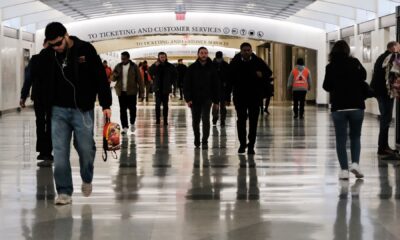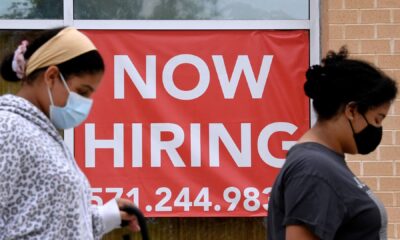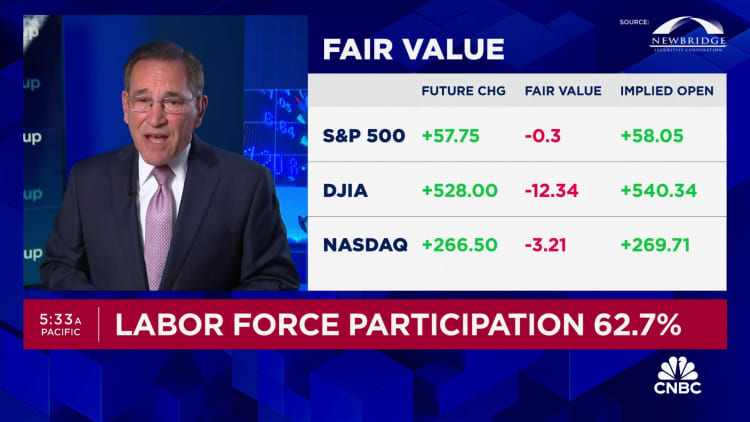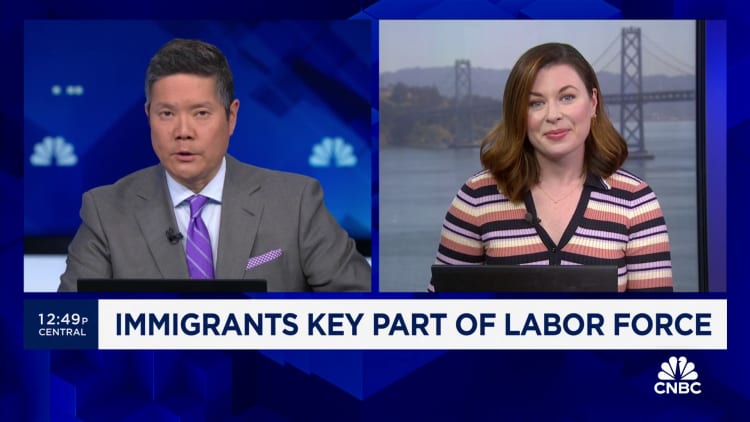Economics
The rise of the remote husband
Published
1 month agoon

In costa mesa, a city in California’s wealthy, beachy Orange County, she is working her way up to becoming a partner in the local office of a major law firm; he is an executive at a tech startup based in the Bay Area, more than 400 miles away. In Cambridge, Massachusetts, he is writing code from their apartment just off-campus, while she attends her classes at Harvard Law School. She is an obstetrician, he works remotely for a tech company; she is an academic at an Ivy League university, he works for a crypto company. All over the country, among the well-heeled and well-educated, a new trend appears to be emerging. When the wives head out in the morning, to their offices, classrooms or hospitals, they are waving goodbye to their husbands, who remain at home.
This is hardly a gender-swapped 1950s revival. The men are still working, after all, not predominantly cooking, cleaning and caring for children. But it does reflect an underappreciated effect of the rise of remote work: the rise of the remote husband.
Men and women still specialise in different kinds of work. Jobs in industries like computer science and engineering are disproportionately performed by men. Teaching and nursing jobs are dominated by women. Professions like law and medicine may still employ more men than women, but the scales are tipping: more women than men are enrolled in law school and medical school. As such, among young couples, she is probably more likely to be going to be a lawyer or a doctor than he is.
Different occupations have also had to take different approaches to remote working. A minority of medical professionals may be able to work remotely, by taking telehealth jobs, but the vast majority have to treat their patients in person. Lawyers may be tied to a specific state or area by their licence and speciality. Meanwhile, the industries which reported the highest level of remote-work flexibility are coding and technology, architecture, engineering and business jobs. About half of people working in computer or mathematical jobs work remotely full-time.
The upshot is that, in aggregate, it is easier for men to work from wherever they please. A survey carried out by McKinsey, a consultancy, found that 38% of working men had the option to work remotely full-time, compared with 30% of women. Roughly half of women report being unable to work remotely at all, compared with 39% of men.
This may sound like yet another way in which women have ended up with the short end of the stick. But that view is myopic. Couples compromise in all kinds of ways for their lives to work together. If she is offered a big promotion, conditional on moving to Chicago, she may have to turn it down if his job is tied to New York. The geographical liberation of either partner makes it possible for the other to ascend the corporate ladder. The Costa Mesa couple picked that area because it was convenient for her job—and for access to their children’s grandparents, who now regularly entertain the little ones.
Claudia Goldin, a Nobel laureate, has written about how remote work may be a boon for women. Over the past 200 years women’s participation in the labour force has been highest when it has been possible to perform paid work from home. She has also found that gender wage gaps are tightest in fields where flexible working is the norm. But it is not only flexibility in the work that women do that may be to their advantage. ■
Stay on top of American politics with The US in brief, our daily newsletter with fast analysis of the most important electoral stories, and Checks and Balance, a weekly note from our Lexington columnist that examines the state of American democracy and the issues that matter to voters.
You may like
-


Immigrant workers are helping boost the U.S. labor market
-


Jobless rates rise in April for all race groups except Black Americans
-


Why the Biden administration is rushing to produce regulations
-


Seaport Tower shows New York’s fight between housing and heritage
-


A surprising Japanese presence in a traditional American craft
-


Joe Biden is practising some Clintonian politics

This is the introduction to Checks and Balance, a weekly, subscriber-only newsletter bringing exclusive insight from our correspondents in America.
Sign up for Checks and Balance.


The U.S. economy added fewer jobs than expected in April while the unemployment rate rose, lifting hopes that the Federal Reserve will be able to cut interest rates in the coming months.
Nonfarm payrolls increased by 175,000 on the month, below the 240,000 estimate from the Dow Jones consensus, the Labor Department’s Bureau of Labor Statistics reported Friday. The unemployment rate ticked higher to 3.9% against expectations it would hold steady at 3.8%.
Average hourly earnings rose 0.2% from the previous month and 3.9% from a year ago, both below consensus estimates and an encouraging sign for inflation.
The jobless rate tied for the highest level since January 2022. A more encompassing rate that includes discouraged workers and those holding part-time jobs for economic reasons also edged up, to 7.4%, its highest level since November 2021. The labor force participation rate, or those actively looking for work, was unchanged at 62.7%.
Wall Street already had been poised for a higher open, and futures tied to major stock market averages added to gains following the report. Treasury yields tumbled after being little changed before the release. The report raised the prospect of a “Goldilocks” climate where growth continues but not at such a rapid pace to force the Fed to tighten policy further.
“With this report, the porridge was just about right,” said Dan North, senior economist at Allianz Trade. “What would you like at this point the cycle? We’ve had interest rates jacked up pretty high, so you would expect to see the labor market slow down a little. But we’re still at pretty high levels.”
Consistent with recent trends, health care led job creation, with a 56,000 increase.
Other sectors showing significant rises included social assistance (31,000), transportation and warehousing (22,000), and retail (20,000). Construction added 9,000 positions while government, which had shown solid gains in recent months, was up just 8,000 after averaging 55,000 over the previous 12 months.
Revisions to previous months took the March gain to 315,000, or 12,000 from the initial estimate, and February to 236,000, a decline of 34,000.
Household employment, which is used to calculate the unemployment rate, increased by just 25,000 on the month. Workers holding full-time jobs soared by 949,000 on the month, while those hold part-time jobs slumped by 914,000.
The report comes two days after the Fed again voted to hold borrowing costs steady, keeping its benchmark overnight borrowing rate in a targeted range between 5.25%-5.5%, the highest in more than 20 years.
Following the decision, Chair Jerome Powell characterized the jobs market as “strong” but noted that inflation is “too high” and this year’s economic data has indicated “a lack of further progress” in getting inflation back to the Fed’s 2% target.
But market action shifted after the jobs report indicated an easing labor market and softer wage increases. Traders priced in a strong chance of two interest rate cuts by the end of 2024, with the first reduction expected to come in September, according to CME Group data.
“This is the jobs report the Fed would have scripted,” said Seema Shah, chief global strategist at Principal Asset Management. “The first downside payrolls surprise in several months, as well as the dip in average hourly earnings growth, will bring the rate cutting dialogue back into the market and perhaps explains why Powell was able to be dovish on Wednesday.”
Though inflation has come well off its highs in mid-2022, it is still considerably above the central bank’s comfort zone. Most reports this year have shown inflation around 3% annually; the Fed’s own preferred measure, the core personal consumption expenditures price index, most recently was at 2.8%.
Higher prices have been putting upward pressure on wages, part of an inflation picture that has kept the Fed on the sidelines despite widespread market expectations that the central bank would be cutting interest rates aggressively this year.
Most Fed officials in fact had been mentioning the likelihood of reductions in their public comments. However, Powell at his post-meeting news conference Wednesday made no mention of the likelihood that rates would be lowered at some point this year, as he had in the past.
Don’t miss these exclusives from CNBC PRO
Economics
Immigrant workers are helping boost the U.S. labor market
Published
2 weeks agoon
May 4, 2024

The strong jobs market has been bolstered post-pandemic by strength in the immigrant workforce in America. And as Americans age out of the labor force and birth rates remain low, economists and the Federal Reserve are touting the importance of immigrant workers for overall future economic growth.
Immigrant workers made up 18.6% of the workforce last year, a new record, according to Bureau of Labor Statistics data. Workers are taking open positions in agriculture, technology and health care, fields where labor supply has been a challenge for those looking to hire.
Despite the U.S. adding fewer-than-expected jobs in April, the labor force participation rate for foreign-born workers ticked up slightly, to 66%.
“We don’t have enough workers participating in the labor force and our birth rate has dropped down 2% last year from 2022 to 2023. … These folks are not taking jobs. They are helping to bolster and helping us build back — they’re adding needed workers to the labor force,” said Jennie Murray, CEO of the National Immigration Forum, a nonpartisan nonprofit advocacy organization.
The influx of immigrant workers is also a projected boost to U.S. output, and is expected to grow gross domestic product over the next decade by $7 trillion, Congressional Budget Office Director Phillip Swagel noted in a February statement accompanying the 2024-2034 CBO outlook.
“The labor force in 2033 is larger by 5.2 million people, mostly because of higher net immigration. As a result of those changes in the labor force, we estimate that, from 2023 to 2034, GDP will be greater by about $7 trillion and revenues will be greater by about $1 trillion than they would have been otherwise. We are continuing to assess the implications of immigration for revenues and spending,” Swagel wrote.
‘Huge competition’
Goodwin Living, a nonprofit faith-based elder-care facility in Northern Virginia that cares for 2,500 adults day to day, is heavily reliant on immigrant workers. Some 40% of its 1,200 workers are foreign-born, representing 65 countries, according to CEO Rob Liebreich, and more workers will be needed to fill increasing gaps as Americans age and need assistance.
“About 70% of 65-year-olds are expected to need long-term care in the future. We need a lot of hands to support those needs,” Liebreich told CNBC. “Right now, one of the best ways that we see to find that is through people coming from other countries, our global talent, and there’s a huge competition for them.”
In 2018, Goodwin launched a citizenship program, which provides financial resources, mentorship and tutoring for workers looking to obtain U.S. citizenship. So far, 160 workers and 25 of their family members have either obtained citizenship or are in the process of doing so through Goodwin.
Wilner Vialer, 35, began working at Goodwin four years ago and serves as an environmental services team lead, setting up and cleaning rooms. Vialer, who came to the U.S. 13 years ago from Haiti, lost his job during the pandemic and was given an opportunity at Goodwin because his mother had been employed at the facility.
He applied for U.S. citizenship before getting his current job, but after he worked there for six months, the Goodwin Living Foundation covered his application fee of $725, the nonprofit said. Vialer became a U.S. citizen in 2021, and his 15-year-old daughter received a citizenship grant and became a U.S. citizen in 2023.
Vialer’s hope is to have his wife join the family from Haiti, as they have been separated for six years.
“This program is a good opportunity,” Vialer said. “They help me, I have a family back home. … This job really [does] support me when I get my paycheck to help them back home.”
Workers are not required to stay with Goodwin after becoming U.S. citizens, but those who do stay are there 20% longer than those who do not participate in the program, Liebreich said. Speeding up the path to citizenship is key to remaining competitive in a global economy, he added.
“If we want to attract and retain this global workforce, which we desperately need, we need to make the process a lot easier,” Liebreich said.
Looking ahead to November, immigration will be a hot topic on the presidential campaign trail and for voters. Both President Joe Biden and former President Donald Trump have made trips to the southern border in recent months to address the large number of migrants entering the country.

Betting on the Kentucky Derby? Here’s how to think like a professional handicapper.

Warren Buffett says Greg Abel will make Berkshire Hathaway investing decisions when he’s gone

EV makers win 2-year extension to qualify for tax credits

Are American progressives making themselves sad?

‘Best Firms for Tech’ 2024 deadline extended to April 10

